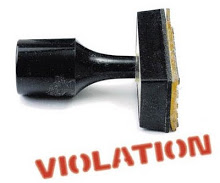 The Environmental Protection Agency (EPA) performs its mission of protecting human health and the environment by providing research, monitoring our environment, as well as setting and enforcing environmental standards. The EPA performs inspections throughout a variety of industries but similar violations tend to dominate each industry. Below are some of these industries along with their most prevalent violations…
The Environmental Protection Agency (EPA) performs its mission of protecting human health and the environment by providing research, monitoring our environment, as well as setting and enforcing environmental standards. The EPA performs inspections throughout a variety of industries but similar violations tend to dominate each industry. Below are some of these industries along with their most prevalent violations…
Healthcare
Many violations found in the healthcare industry are related to hazardous waste management. EPA inspections are conducted under the Resource Conservation and Recovery Act (RCRA) program with helps the EPA regulate the management and disposal of hazardous waste from the time of production to final disposal.
- Identification of hazardous waste. This includes the improper identification of hazardous waste to be sure that it is properly stored and separated from incompatible materials.
- Universal waste. This includes failure to ensure that waste meets land disposal restrictions. In addition, mishandling of mercury waste can be a major issue for healthcare facilities.
- Container management. Storage space can be at a premium in healthcare facilities. Lack of a proper storage facility or space for hazardous waste can lead to overcrowding and lack of segregation of potentially incompatible materials.
- Labeling. This includes inadequate labeling to properly identify hazardous waste so that it is properly stored and not mixed in with chemicals that are still usable. Labels that are damaged or unreadable are also a problem. This can make products unable to be safely identified and used.
Chemical Manufacturers
Chemical manufacturer violations frequently involve hazardous waste violations and clean air violations. EPA will work with the manufactures to reduce their hazardous waste generation and air emissions.
- Hazardous chemical release. The Comprehensive Environmental Response, Compensation, and Liability Act (CERCLA), commonly known as Superfund, gives the EPA authority to respond directly to releases or threatened releases of hazardous substances that may endanger public health or the environment.
- Improper notification of hazardous chemical release. When a hazardous chemical release occurs, companies are required to notify local authorities within state and federal allotted time periods, so emergency responders are prepared to handle releases effectively and safely.
- Storing hazardous waste without a permit. Hazardous waste is only allowed be be stored in specified allowable quantities and for certain amounts of time. The “person in charge” at your facility must be knowledgeable about storing waste products that the EPA considers hazardous.
- Emissions of hazardous air pollutants. The Clean Air Act requires industries to comply with federal monitoring, record keeping, reporting, and operating requirements, as well using certain technologies to reduce combustion emissions. If emissions exceed regulated amounts then violations can be incurred.
- Ozone-depleting air emissions. Emissions that can deplete the stratospheric or “good” ozone layer include chlorinated fluorocarbons (CFC) that can be released from refrigeration equipment or appliances. If emissions exceed regulated amounts then violations can be incurred.
Hazardous Waste Management Facilities
All generators, transporters, treaters, storers, and disposers of hazardous waste are required to provide information about their activities to state environmental agencies. These agencies, in turn, pass on the information to regional and national EPA offices.
- Failure to have the appropriate hazardous waste permit. A new hazardous waste management facility must obtain a Part B RCRA Permit prior to construction or to receiving waste. Annual permit and inspection fees are assessed by the state for managing hazardous waste.
- Failure to train employees responsible for hazardous waste management. Employees must be properly trained in hazardous waste management and those training records must be kept up-to-date.
Municipalities or Industries That Discharge Wastewater
All facilities that discharge pollutants through a point source into waters of the United States are regulated under the National Pollutant Discharge Elimination System (NPDES) program.
- Effluent exceedances. The Clean Water Act requires that EPA set effluent limitation guidelines based on best practicable and available technology that is economically achievable.
- Permit or compliance schedule violations. Municipalities must file reports that are required by a permit to discharge stormwater. Annual reporting required under an NPDES municipal stormwater permit lets the EPA monitor a municipality’s compliance with stormwater discharge laws.
—
Need someone to help your business in their dealings with the EPA? We can handle it for you, so you can focus on your core business.
Contact Us (859-689-9222 – KY, 513-367-4100 – OH)
To get more information about how we can help your business.
 About Environmental Risk Management
About Environmental Risk Management
1-Source Turnkey Environmental & Safety Services
Since 1989, Environmental Risk Management has been providing responsive, client focused 1-source turnkey solutions for a wide variety of environmental safety challenges. With our experience and extensive network of diverse internal and external resources, our clients trust us to provide quality Environmental & Safety Services for their businesses. Our environmental compliance specialists recognize the need to consult with private industry and the business community and our goal is to ensurer our client’s are complying with complex environmental regulations and minimizing their environmental liabilities.
> Learn More
